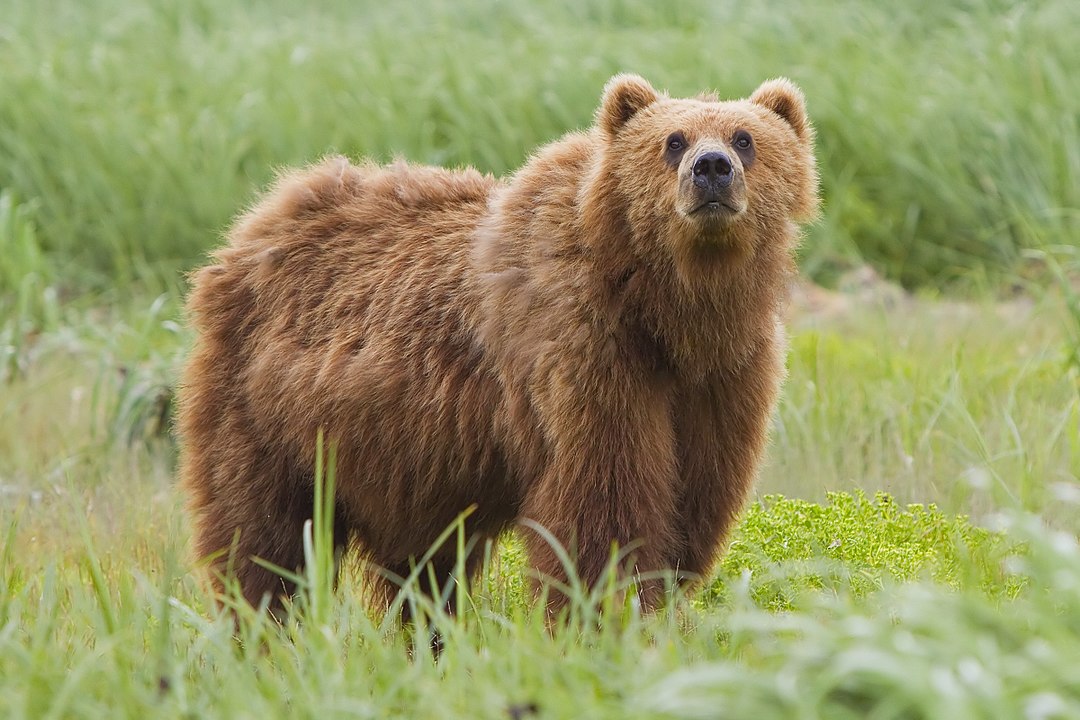Summary | Excerpt | Reviews | Beyond the Book | Read-Alikes | Genres & Themes | Author Bio

A Nora Best Mystery #1
by Gwen FlorioThis article relates to Best Laid Plans
 Bears terrify a lot of people. So much so that "arkoudaphobia" — the fear of bears — is a common phenomenon.
Bears terrify a lot of people. So much so that "arkoudaphobia" — the fear of bears — is a common phenomenon.
However, the danger bears pose to people in North America is massively embellished in the public's collective psyche. Fantastical representations of bears in literature, television and film have exacerbated arkoudaphobia. The Oscar-winning film The Revenant is one example of bear mauling dramatization. The 1989 book We're Going on a Bear Hunt is an example of early fear-building among children.
In actuality, given how little wild habitat bears have left and the penchant humans have to hike through the bear territory that remains, attacks are very rare. To be so unfortunate as to die by mauling — at least in the jowls of a bear — would require a similar amount of luck (or lack thereof) as winning the lottery. In Yellowstone National Park, an area with quite a few grizzly bears and over 118 million visits since 1979, there have only been 44 total bear attacks and no fatalities. All in all, you only have a 1 in 2.6 million chance of being attacked by a bear in Yellowstone Park. In the last 16 years, there have only been two fatal bear attacks on the Appalachian Trail — one of the most heavily traveled trails in North America.
The major factors impacting the likelihood of a bear attack are: bear familiarity with humans; the proximity of offspring; and whether or not a bear is caught off-guard by its contact with humans. Certain species of North American bears tend to be more aggressive than others, but even this is not as black-and-brown as it first seems!
Black bears, the smallest bears found in North America, weigh between 150 and 350 pounds and tend to be the least aggressive. One reason for their tendency to run rather than fight may be that they have claws that allow them to easily climb trees — no other bear species in North America can do this. This offers black bears an alternative to aggression when they feel cornered in the woods. Like all bears, black bears love to eat. They aren't interested in eating humans, they just want our food. Most black bear disturbances are from dumpster diving, not home invasion. This is fortunate, as the black bear ecosystem overlaps with several of the more populated areas of North America. Their habitat stretches from Florida all the way up the Appalachian Mountains well into Canada, and across the forests of the upper Midwest. Research suggests that black bears that are exposed to humans are far less likely to attack. Turns out, once black bears get to know us, we're really not that interesting to them.
Brown bears, also commonly referred to as "grizzlies," are typically larger, weighing in anywhere from 300-1,700 pounds, depending on their diet and habitat. (If you'd like to see some larger specimens, check out the Katmai Conservancy's annual Fat Bear Week competition.) Though they tend to be more aggressive when defending their offspring, brown bear attacks are even rarer than those by black bears. This is most likely due to sparse human populations where the majority of U.S. grizzlies remain — in Wyoming, Montana and Alaska.
Unfortunately, this statistic may be of little reassurance for arkoudaphobes. Given a typical brown bear's size, it is far more likely to inflict severe corporal damage than a black bear. (Its jaws can crush a human skull!) Research suggests brown bears that are familiar with humans are far less likely to attack. Alternatively, too much desensitization to humans can encourage them to roam further into populated areas, actually increasing the likelihood of dangerous interactions. Regardless, all bets are off if you stumble upon a mother brown bear and her cubs.
Perhaps given that brown bears cannot climb trees, when they feel endangered or surprised, they appear far more likely to charge at and even attack those who come near. Don't bet on outrunning an angry brown bear either. With speeds of up to 34 miles per hour, your best bet may be to climb the nearest tree.
Polar bears are a different story altogether. Though media representations of polar bears are often positive and endearing — think of Coca-Cola commercials, stuffed animals and environmentalist pleas — these black-skinned, white-furred descendants of brown bears are apex predators, and humans aren't necessarily taboo. Though they live in some of the most remote areas in the northern hemisphere (near and in the Arctic), if you're going to rationally fear any type of bear, this is the species.
Polar bears are extremely dangerous when encountered in the wild. They may become more so in the near future, because their natural food supply (seals) are disappearing with the sea ice. (On the morbid side, it is estimated that polar bears will be extinct by 2100. Future generations of arkoudaphobes may be able to check this species off their list!) Whereas the other species of bear almost always only attack humans out of fear — for their offspring or themselves — polar bears, by contrast, have been known to prey on humans. Nonetheless, due to the fact that polar bears and humans do not often cross paths, polar bear attacks are very rare.
Are bears dangerous? Yes! All bears are unpredictable, wild animals.
Are bears vicious? Generally, no. In fact, black and brown bears are often just looking for easy food. Once they get a taste of human food, they prefer digging in coolers and backpacks over finding blueberries or fishing. Unfortunately, a taste for chips and bratwursts may make them a bit more brazen around humans, leading to some unfortunate encounters.
Should you be fearful of going in the woods because of bears? No.
Every year around 150 Americans die from hitting deer while driving. Likely because death by mammal stepping in front of your car isn't as sensational, few Americans suffer from elafiphobia — fear of deer. By contrast, only 68 people have been killed by bears in the United States and Canada since 1960. A large percentage of these deaths have occurred in remote areas of Canada, where bears are less familiar with humans. Statistically, at least, it makes more sense to be scared of death by deer on the way to the woods than death by bear while in the woods.
Brown bear in Alaska's Kodiak National Wildlife Refuge by Yathin S. Krishnappa
Filed under Nature and the Environment
![]() This "beyond the book article" relates to Best Laid Plans. It originally ran in February 2021 and has been updated for the
July 2021 paperback edition.
Go to magazine.
This "beyond the book article" relates to Best Laid Plans. It originally ran in February 2021 and has been updated for the
July 2021 paperback edition.
Go to magazine.
Your guide toexceptional books
BookBrowse seeks out and recommends the best in contemporary fiction and nonfiction—books that not only engage and entertain but also deepen our understanding of ourselves and the world around us.